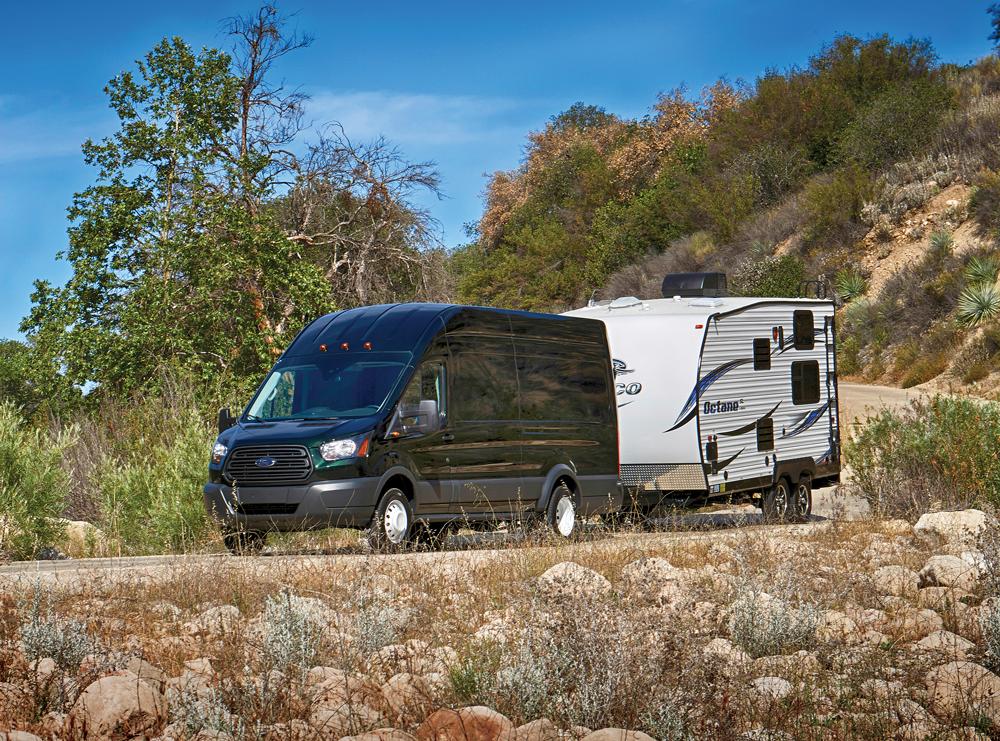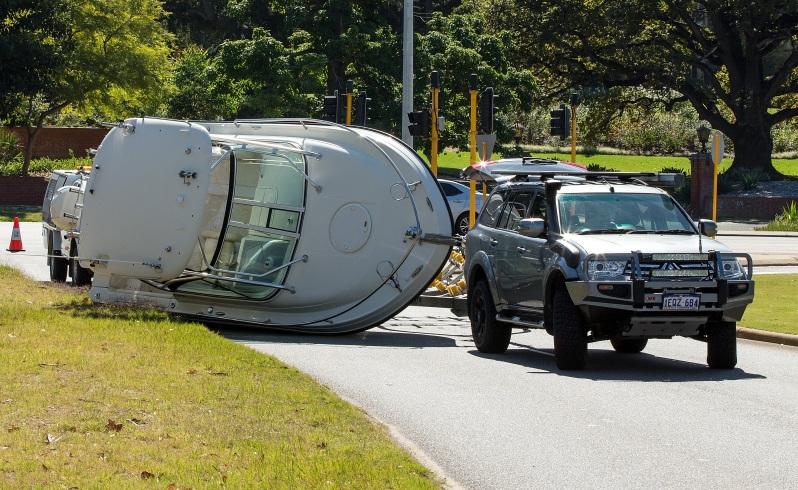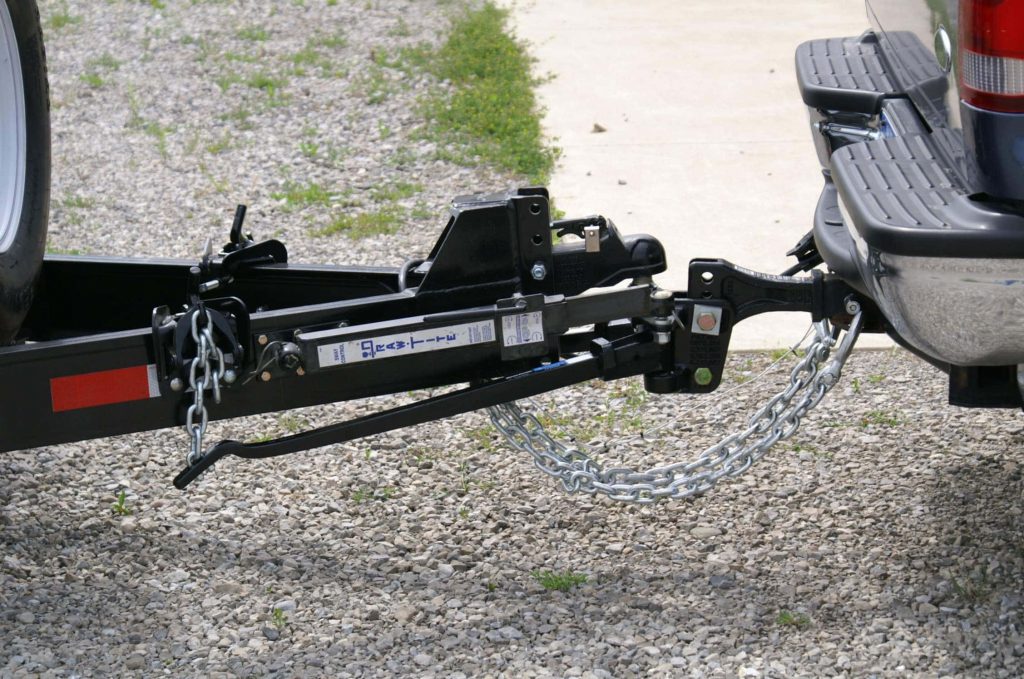When RV-ing, you often need to tow heavy loads. But keeping the trailer align with the vehicle and preventing it from swaying around is a real trouble, especially in bad weather and on uneven road surfaces. A weight distribution hitch is a great solution. It ensures a smooth, sway-free towing experience.
How does weight distribution hitch work? How does it help with equal weight distribution and keeping the ride as stable as possible?
Contents
The Necessity of a Weight Distribution Hitch?
So, you want to know how does weight distribution hitch work? Knowing its role in keeping a vehicle stable will help you understand its working mechanism.
Weight is an important factor when towing a travel trailer. The Gross Vehicle Weight Rating (GVWR) indicates the maximum hauling limit of your truck or SUV. While the total weight of the trailer, cargo, and other things have to be under the GVWR limit, a hitch is the standard component to keep the towed stuff safe and secure on the road. With a hitch installed, the driver has complete control of the towing vehicle.

Types of Towing Hitches
There are seven types of hitches and weight distribution is one of them.
- Rear Receiver Hitch
- Front Mount Hitch
- Weight Distribution Hitch
- 5th Wheel Hitch
- Gooseneck Hitch
- Pintle Hitch
- Bumper Hitch
The rear receiver hitch is the most common and ideal for light loads or weight well below the GVWR. A weight distribution hitch, on the other hand, comes handy when the trailer’s tongue weight exceeds the weight limit of the tow vehicle’s receiver hitch.
A weight distribution hitch is mounted to a rear hitch, but it’s still considered as a separate hitch type. It does the job of dispersing tongue weight across the trailer and the tow vehicle. You will mostly see these hitches with camping RVs.
Problems Without a Weight Distribution Hitch
Adding this hitch will be good for the overall health of your towing vehicle and reduce unnecessary stress on several components including suspension, axles, and chassis. If you haul heavy loads often, the absence of a weight distribution hitch will make the tow vehicle sag by taking the weight off the front axle. This creates many problems and some warning signs are:
- Excessive sway of the trailer
- Body rolling at a higher rate
- Inefficient braking system that lacks stopping power
- Poor steering control and traction
- Bad illumination of the headlights

Installing a weight distribution hitch will prevent all these issues from occurring by diffusing the weight evenly all across the tow vehicle and the trailer. Weight carrying or traditional hitches work fine for small loads. But if your vehicle’s tow rating is more than 5,000 pounds or the camper’s weight is over 50% of the towing vehicle’s weight, you will need to use a weight distribution hitch. Also, using such a hitch could be a legal requirement when the gross trailer weight exceeds a certain limit.
How Does Weight Distribution Hitch Work?
To understand how does weight distribution hitch work, you need some knowledge about its structure and functional mechanism. It uses long rods, known as spring rods, serving as a weight equalizer. These adjustable rods leverage the connection point and redistribute some tongue weight to other parts of the vehicle and trailer.
Loaded stuff applies an uplift force to the spring rods. In response to that force, they raise the back of the towing vehicle and trailer’s tongue to the same level. Without a weight distribution hitch, the towing vehicle’s back axle would provide support for both the vehicle and the towed trailer, causing the front axle to rise a notch higher than the back part.
This height difference between the front and back axles affects everything from steering to braking. The excessive swaying may impair the road vision of the driver and make it hard to keep the vehicle stable. But installing a weight distribution hitch will save you from dealing with these problems.
Fixing Sway Control
How does weight distribution hitch work in sway control? Shaking, wobbling, or swinging on the road could be extremely dangerous when you are driving a loaded truck or towing a heavy trailer at high speeds.
When does a vehicle sway? The simple answer is the uneven weight distribution, but if you dig deeper, you will find two particular situations.
When the hauled weight is almost similar or crosses the GVWR, the front part of the camper will sag toward the ground, causing the towing vehicle’s front part to rise a bit. This imbalanced height will cause the vehicle’s rear axle and camper’s hitch diving when you apply quick brakes.
The opposite situation is also dangerous as less tongue height will cause the camper’s front part and the vehicle’s back part to rise off the ground. To avoid these fatal situations, you need something that balances the tongue and gross trailer weight.

This hitch fixes this problem by balancing the height of the rear and front axles. It makes the front axles to slump a little, helping them to make proper contact with the ground. When the height is balanced and all axles are on the same level, the vehicle will ride smoothly without shaking uncontrollably or swinging to one side.
Correcting the Crosswind Trouble
Sometimes, vehicles can sway due to crosswind. The weight distribution hitch can correct the imbalanced weight distribution, but cannot cancel the effect of crosswinds. Some hitches come with a built-in reactionary control device that kicks in when the sway is in motion. It stops sideways movements by increasing friction resistance or electrically applying trailer brakes.
You can also add a proactive type control device that steps in before the sway takes place. It does so by establishing a strong connection between the vehicle and the camper. So, the first type keeps the swaying under control after it happens, and the second type outright eliminates it.

Hello Peter,
We are in the process of selecting a tow vehicle for a trailer we are also considering, which happens to have a 900 lb tongue weight.
I have a question regarding this statement in your article: “A weight distribution hitch, on the other hand, comes handy when the trailer’s tongue weight exceeds the weight limit of the tow vehicle’s receiver hitch”.
If a particular tow vehicle’s maximum tongue load is under 900 lb, how would you determine if the use of a weight-distribution hitch would be enough to consider that tow vehicle as a suitable (and safe) option, assuming it meets every other towing requirement (GCVWR, towing capacity, payload, etc)?
Thanks in advance for your response.
Best,
CL